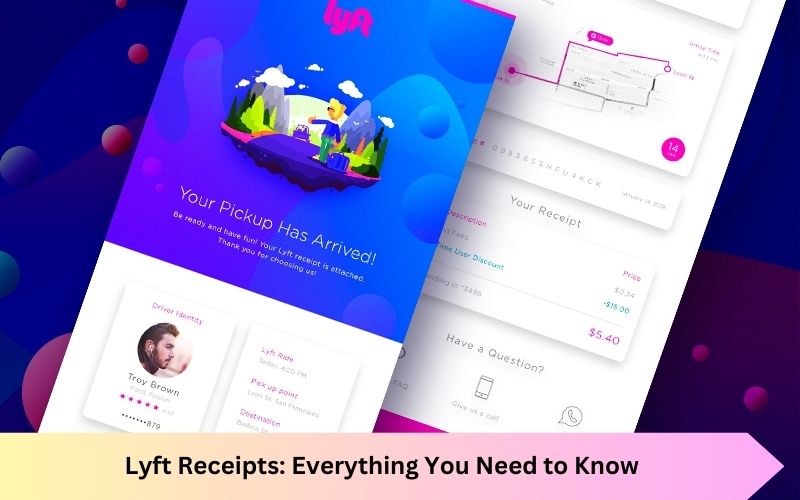In today’s fast-paced world, ride-hailing services like Lyft have become essential for many people, offering a convenient and efficient way to get from point A to point B. Whether you’re commuting to work, heading to the airport, or exploring a new city, Lyft provides a seamless transportation experience. However, one aspect that often raises questions among users is the Lyft receipt. In this blog post, we will dive deep into what Lyft receipts are, why they are important, and how to access and understand them.
What is a Lyft Receipt?
A Lyft receipt is a digital document provided to passengers after completing a ride. This receipt serves as proof of the transaction and includes detailed information about the ride, including the fare, distance traveled, and payment method. Lyft sends these receipts via email, and they can also be accessed through the Lyft app.
Why Are Lyft Receipts Important?
1. Expense Tracking and Reimbursement:
For business travelers, keeping track of transportation expenses is crucial. Lyft receipts provide a clear record of ride costs, which can be used for expense reports and reimbursement requests. These receipts include all the necessary details, making it easy to document travel expenses for tax purposes or company accounting.
2. Personal Budgeting:
Even for personal use, Lyft receipts can help in budgeting and managing finances. By reviewing receipts, users can monitor their spending on transportation and make informed decisions about their travel habits.
3. Dispute Resolution:
In the rare event of a fare dispute or a ride issue, having a detailed receipt can be invaluable. The information on the receipt can help resolve disputes by providing a clear account of the ride details, including the route taken and the time of the ride.
How to Access Your Lyft Receipt
Via Email:
After completing a ride, Lyft automatically sends a receipt to the email address associated with your account. Check your inbox (and sometimes the spam folder) for an email from Lyft. The email subject line usually indicates that it is a receipt for your recent ride.
Through the Lyft App:
- Open the Lyft App: Launch the Lyft app on your smartphone.
- Navigate to ‘Ride History’: Tap on the menu icon (usually three horizontal lines) in the top-left corner of the screen. Select ‘Ride History’ from the menu.
- Select the Ride: Browse through your ride history and select the ride for which you need the receipt.
- View Receipt Details: Once you select the ride, you will see the ride details, including the fare breakdown, distance, and payment method. You can also opt to resend the receipt to your email.
Understanding Your Lyft Receipt
A typical Lyft receipt contains the following key details:
1. Ride Summary:
- Date and Time: The date and time when the ride started and ended.
- Pickup and Drop-off Locations: The exact addresses or locations where the ride began and ended.
- Driver’s Name and Car Details: Information about the driver and the vehicle used for the ride.
2. Fare Breakdown:
- Base Fare: The initial charge for the ride.
- Distance: The cost calculated based on the distance traveled.
- Time: Charges based on the duration of the ride.
- Service Fee: A fee for using Lyft’s service.
- Tolls and Surcharges: Any additional charges such as tolls, airport fees, or surcharges.
3. Payment Information:
- Total Fare: The total amount charged for the ride.
- Payment Method: The payment method used for the transaction (e.g., credit card, PayPal).
- Lyft Credits or Discounts: Any credits or discounts applied to the fare.
4. Additional Details:
- Ride ID: A unique identifier for the ride, useful for any correspondence with Lyft’s support team.
- Tip Amount: If you added a tip for the driver, it would be listed separately.
Tips for Managing Your Lyft Receipts
1. Keep Your Email Updated:
Ensure that the email address associated with your Lyft account is current and accessible. This way, you will always receive your receipts without any issues.
2. Regularly Check Your Ride History:
Periodically review your ride history in the Lyft app to keep track of your transportation expenses and verify that all rides are accurately documented.
3. Use Receipt Management Tools:
Consider using receipt management tools or apps that can automatically organize and store your Lyft receipts. These tools can be especially useful for frequent travelers and business users.
Conclusion
Lyft receipts are more than just a confirmation of payment—they are valuable documents that can assist with expense tracking, budgeting, and dispute resolution. By understanding how to access and interpret these receipts, you can make the most of your Lyft experience and ensure that your transportation expenses are well-documented and managed effectively. Whether for personal use or business purposes, keeping track of your Lyft receipts is a smart practice that can save you time and effort in the long run.





